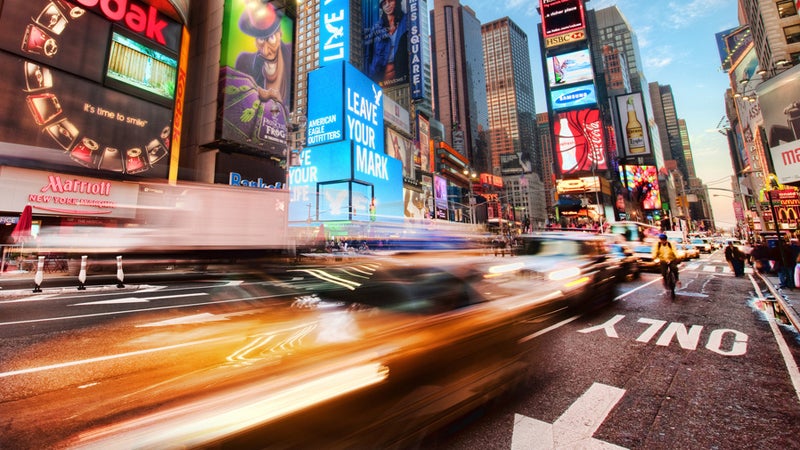New York City: Land of blaring horns and, according to 2013 figures, nearly as many traffic deaths in one year (286) as there are homicides (333). That’s in addition to the estimated 4,000 New Yorkers injured in traffic each year. Mayor Bill de Blasio a $28.8 million budget with the goal of cutting that number to zero by 2024. His Vision Zero initiative shares its method and name with a successful approach from—where else?—Sweden.
The gist of Sweden’s plan is that “no loss of life is acceptable,” according to the country’s . Since 1997, a target goal of zero road deaths or injuries has been part of Swedish law. And it’s working: Traffic-related deaths have fallen by more than 50 percent since Vision Zero started.
How do they do it? A key idea is designing roads and traffic systems that encourage safe driving practices while accommodating the inevitable human error. That means reduced default speed limits, automated traffic enforcement, and even potted plants strategically placed in local roads to force drivers to take extra care. “You should be able to make mistakes without being punished by death,” Lars Darin from the Swedish Transport Administration . In fact, Swedish authorities take a very practical view of which traffic safety battles to pick, saying that pedestrian education probably won’t do much to ease problems like jaywalking.
Logistics and simply a higher volume of traffic will prevent New York City from adopting all of Sweden’s practices—like the heavily used roundabout. But does include increased enforcement (like black box data recorders in taxis), arterial slow zones where the speed limit will drop to 25 mph, and the installation of 250 new speed bumps.
In the meantime, the Twitter account continues to document every single traffic death and injury in the city. Considering that the feed updates multiple times every day, New York City has a lot of work to do before 2024.


